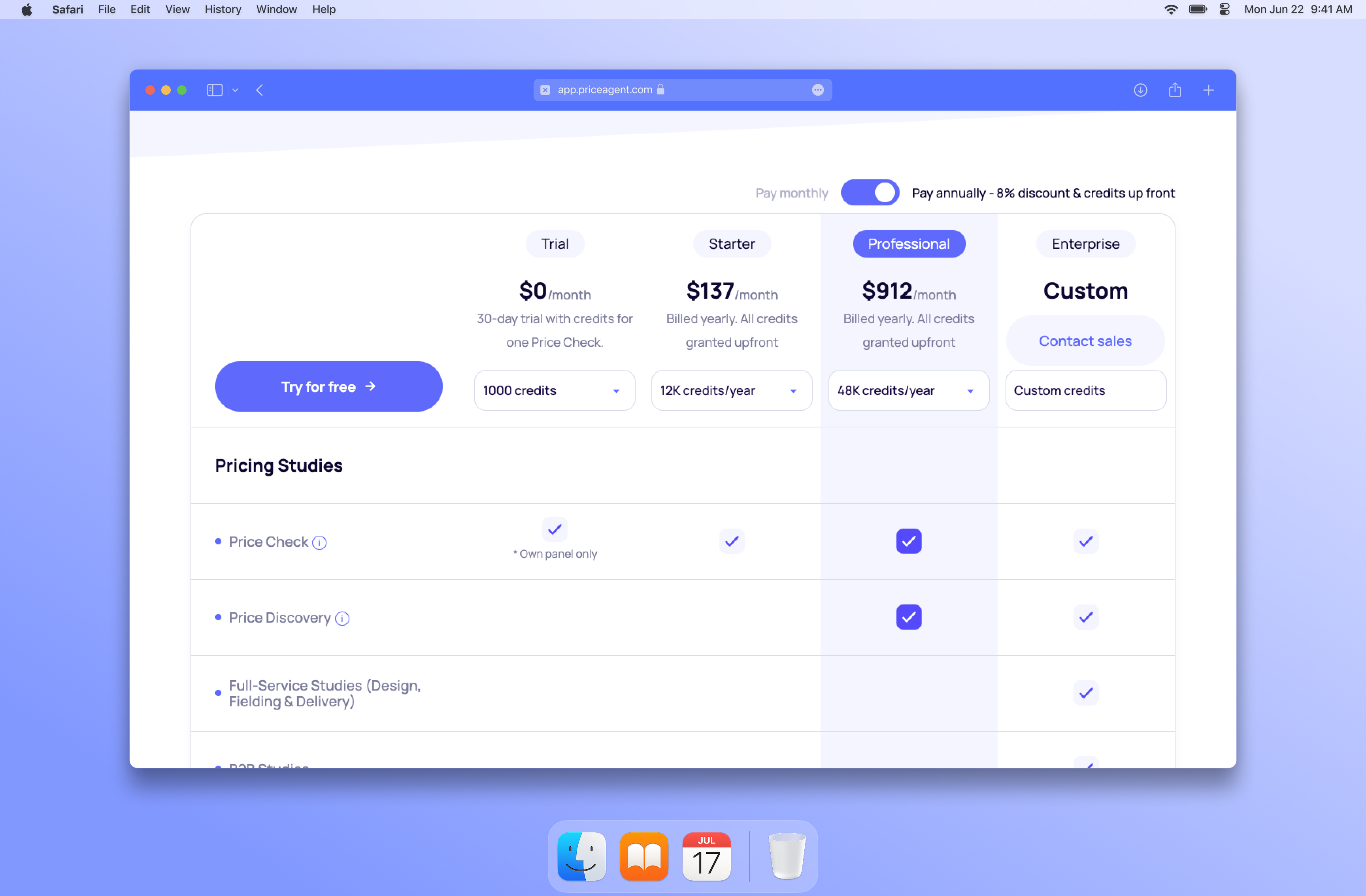The Definitive Pricing Checklist: 12 Must-Dos to Supercharge Your Strategy
Follow this definitive 12-point pricing checklist from experts at PriceAgent to audi

Summarize article with AI
While simple checklists streamline processes, distilling best practices into clear actions optimizes efforts. Grab your highlighter - it's time to audit your current approach and elevate your pricing performance.
Implementing even a few lessons from this definitive guide will show impactful results. Mark your calendar, then let's discuss steps to strengthen your strategic edge.
Competitor Analysis
Thoroughly research competitors' entire portfolio including headline prices, common discounts, product mix, packaging/sizing options, and seasonal or targeted promotions. Analyze how perceived value and positioning relates to pricing. Benchmark your performance along key customer metrics against major competitors.
Customer Segmentation
Refine existing customer profiles by re-running clustering algorithms incorporating new purchasing habits, demographic changes over time, attitudinal shifts, and price sensitivity data points. Profile segments to develop tailored messaging that appeals uniquely to each group.
Value Proposition by Segment
Audit all marketing collateral, sales decks, websites and POS materials to ensure uniqueness messages are front and center for each audience. For example, highlight quality, customization and expertise more prominently to contractors versus DIY buyers.
Cost Structure Review
Hold a line-by-line cost analysis workshop with suppliers, outsourcing leads and production planners. Identify opportunities to eliminate obsolete specs, consolidate vendors, and value engineer without hampering quality or service. Refresh profit/loss stats.
Historical Performance Analysis
Dig into annual financial reports trends, with a close eye on metrics like contribution margin and dollars of profit per item class. Isolate impact periods of campaigns, product launches or external factors. Spot patterns to act on.
Target Pricing Metrics
Establish monitoring of critical leading indicators tied to financial objectives, like conversion rate lift from test segments or profit per high lifetime value customer. Set benchmark targets and monitor progress.
Organizational Alignment
Convene pricing, product management, sales, marketing and execs regularly to align strategies and eliminate information silos. Build cross-functional price change process and initiative ownership.
Experimental Testing Regimen
Devise standardized pricing and promotion test templates across business units involving controls. Automate deployment and validate via statistical significance. Refine high potential variables identified from previous winners into ongoing rotation.
Ongoing Monitoring Process
Design automated dashboard snapshots of customer acquisition costs, churn, average order values, win/loss reasons and other lagging metrics to keep finger on pulse. Trigger responsible teams for fast reaction.
Technology Leverage Assessment
Evaluate budget and timelines to plug data troves, optimize testing, segment further or simulate complex what-ifs depending on maturity level. Vet vendor fit against core needs.
Pricing Communications Audit
Request feedback from customers recently won/lost on how rationales were received. Refine language across marketing, sales and service touchpoints to reinforce value, fairness and clarity of value delivery.
Strategic Pricing Plan Development
Outline financials, initiatives and target outcomes for the next 1-3 years based on trends, innovations and informed by the above analysis. Socialize plan, assign resources and track progress meticulously.
Conclusion
As your pricing advisor, completing this proven checklist will elevate your entire strategic approach in measurable ways. Constant audit and optimization keeps the competitive edge sharp. Take the first step by flagging one to five sections for immediate execution. I'm here to support however needed. Your success is my goal, so let's get started strengthening performance! Sign up to PriceAgent today.









